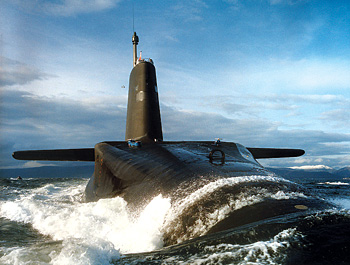INDIAN ARMED FORCES CHIEFS ON
OUR RELENTLESS AND FOCUSED PUBLISHING EFFORTS

SP Guide Publications puts forth a well compiled articulation of issues, pursuits and accomplishments of the Indian Army, over the years

I am confident that SP Guide Publications would continue to inform, inspire and influence.

My compliments to SP Guide Publications for informative and credible reportage on contemporary aerospace issues over the past six decades.
Cover Story
Tyranny of the Distant Battlefield

naltrexone where to buy
buy naltrexone no prescription online buy low dose naltrexoneThe traditional roles of submarines and operations undertaken hitherto may require drastic realignment, if these platforms are to remain relevant in the 21st century
The evolution of warfare was hitherto driven predominantly by technology and its pace was governed by the trajectory of industrial and technological advancement. In the last decade, however, a new dimension has been added to this evolution—the dimension of ‘globalised battlespace’. Further, the pace of this evolution is now governed by the revolution in communication affairs (RCA). RCA now precedes and drives revolution in military affairs (RMA).
Current threats to national security come from sources which are globally distributed and the areas of interest are dispersed globally. As a corollary, India’s adversaries too have strengths and vulnerabilities which are dispersed and distant from their homeland. Thus India’s military posturing and inventory must unambiguously display the resolve and ability to protect its global interests and assets, and also threaten those of the adversary. Therefore, the maritime wars of tomorrow would be fought not only close to India’s shores and sea lanes of communications, but also in other globally dispersed areas of interest and vulnerabilities. These ‘distant battlefields’ may, in fact, hold the key to India’s national security and therefore ought to be the focus of the maritime campaign. Major surface assets, inherently possess the ability to operate away from their home ports. Their combat potential, range and endurance are significantly enhanced when they form part of a balanced and composite task force. Such ‘out of area’ operations are not new and are practised by most modern navies with varying combat potential. air support would be available to the task force through the integral air on surface combatants, dedicated helicopter/aircraft carriers of the formation or from long-range shore-based maritime air assets.
Conventional submarines, on the other hand, are inherently restricted to an area of limited dimension and are relatively difficult to redeploy. The distance between their base ports and area of deployment directly impinges on their time on task and their patrol speed dictates the sea area they can keep under surveillance. If one looks at the tasking of naval forces worldwide in the last two decades, navies have been undertaking almost all tasks in areas distant from their coast; be it constabulary, humanitarian, diplomatic or even less than war situations. Conventional submarines have almost always had no role to play. Similarly, in any situation of open conflicts in the future, conventional submarines will be left out of any maritime operation which entails distant deployment, redeployment of forces or mobile warfare at sea. As mentioned above, globalised dispersion of the national assets, strengths and vulnerabilities as well as those of potential adversaries, will dictate such distant deployments and demand mobility for swift re-deployment.
So, has the tyranny of distant battlefields come to haunt conventional submarines? Have these submarines lost their relevance in the globalised and complex battlefields of the future? Can India’s maritime forces perform and survive in distant battlefields without the under sea component of the ‘balanced task force’. Probably and most importantly, what ought to be done for submarines to triumph over this tyranny of distant battlefield?
India’s Strategic Panorama
Today India has the resources and probably the compulsions to don the mantle of a regional maritime power. This may also assume a global flavour and character, more due to geostrategic and geopolitical churning of the world order and global economic realities rather than internally aspired hegemonous design. Geo-strategically it is an ‘island’ which strides and therefore can influence economically crucial and globally significant sea lanes. Geopolitically it has a turbulent neighbourhood and historically it has inherited a score of unsettled disputes. Militarily it is faced with the entire spectrum of conflict situations; right from internal militancy and political turmoil to a strategic nuclear threat, which is clear, present and unequivocally articulated by the ‘first use’ policy of two nuclear capable, not-so-friendly neighbours. Thus ‘willingness’ to lead a peaceful coexistence and not wanting to grow militarily is not an option for India.
Historically, India has a legacy of producing wealth without having the ability to protect it. Military might is therefore essential, not only for growth, but the very existence of India as a nation state. This military capability has to have the necessary ‘legs’ and ‘wings’ of regional, if not global application. The importance and urgency of having a comprehensive maritime capability, which must include the ability to fight and win the distant battle, cannot be overemphasised.





